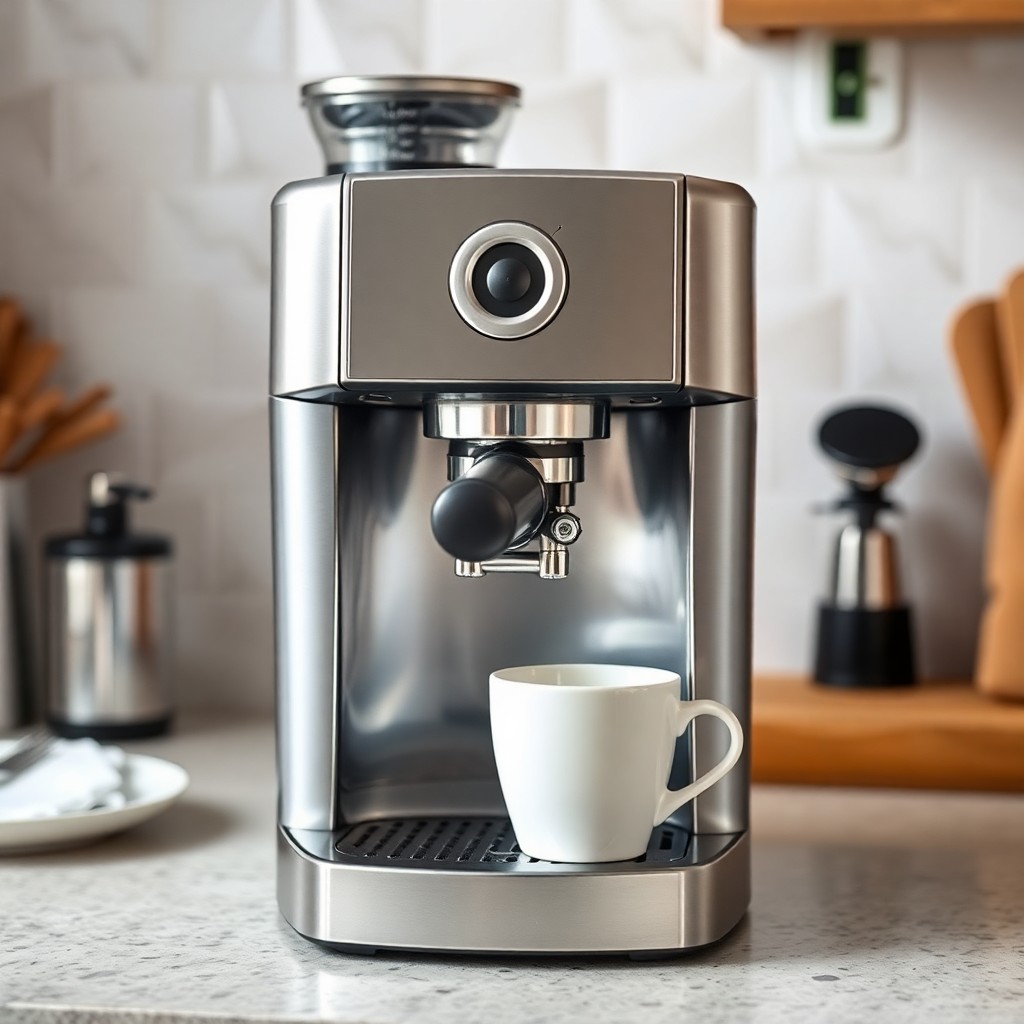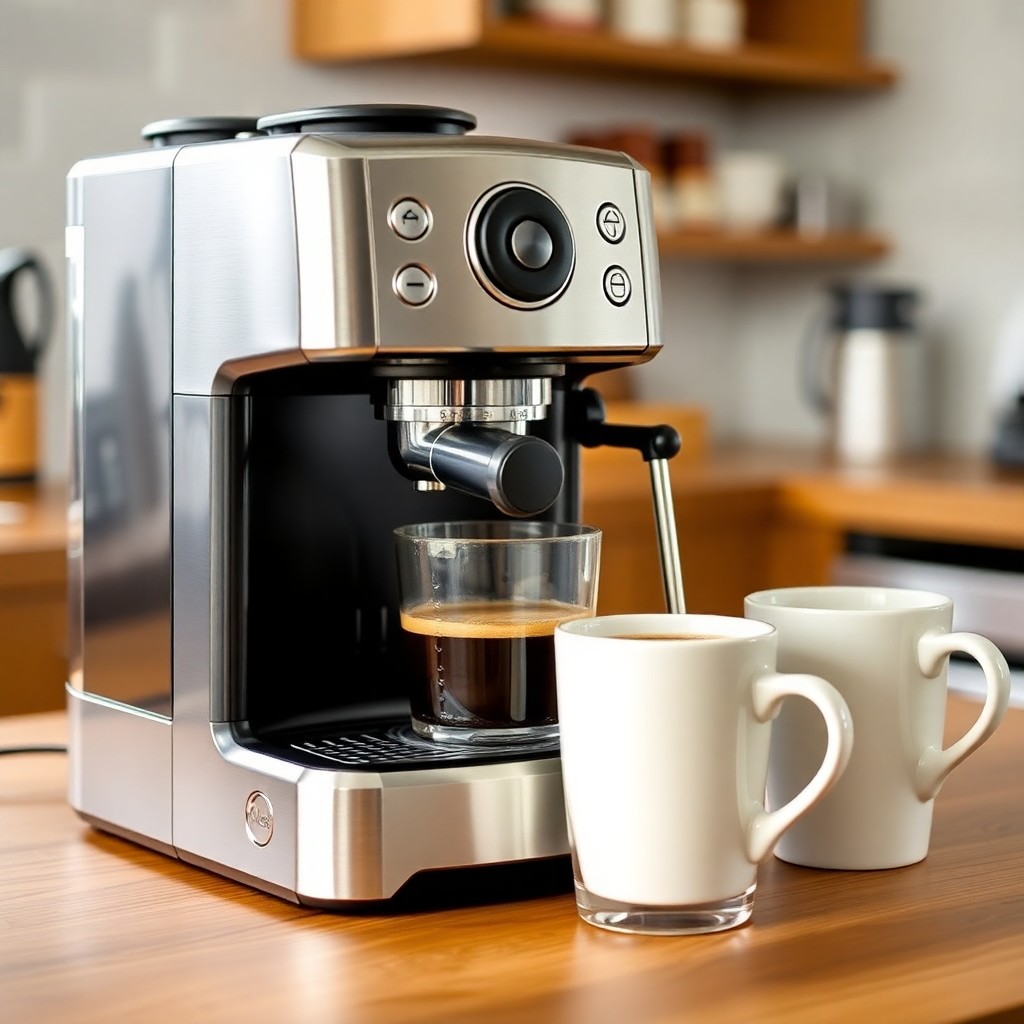How to Clean a Breville Coffee Machine
Cleaning your Breville coffee machine is essential for peak performance and flavor. Start with quick daily tasks: rinse the portafilter, purge the steam wand, and flush the group head. For deeper cleaning, remove the water filter, mix a vinegar solution, fill the tank, and run the machine. Afterward, flush with fresh water to eliminate residue. Inspect the portafilter and drip tray for buildup, and wipe the exterior for hygiene. Regular maintenance, like descaling every 2-3 months, keeps your machine in top shape. Let’s uncover more techniques to make your coffee brewing experience even better.
Key Takeaways
- Perform regular quick cleaning by rinsing the portafilter and flushing the group head after each use to maintain hygiene.
- Deep clean monthly or bi-monthly using a vinegar solution, following the manufacturer’s instructions for optimal results.
- Descale the machine every 2-3 months to prevent mineral buildup and ensure peak performance.
- Purge the steam wand before and after use to eliminate milk residue and enhance flavor quality.
- Inspect and wipe down the exterior, portafilter, and drip tray regularly to maintain cleanliness and machine longevity.
Importance of Regular Cleaning

Cleaning your Breville coffee machine regularly is crucial for maintaining both hygiene and flavor. When you neglect cleaning, bacteria and coffee residue accumulate, which can negatively impact the quality of each cup brewed. Regular cleaning guarantees that your espresso maker remains in prime condition, preserving peak flavor and aroma.
It’s recommended to perform a cleaning cycle monthly or bi-monthly, especially when your water tank is filled with hard water. This helps prevent mineral buildup, which can affect your machine’s performance and longevity. By adhering to the manufacturer’s guidelines for cleaning cycles, you not only enhance hygiene but also extend the lifespan of your coffee machine.
Pay attention to signs that your machine needs cleaning, such as decreased brewing speed or poor extraction quality. These indicators often suggest that coffee residue is affecting your machine’s function. By acting promptly, you can intervene before problems escalate, assuring a consistently great brewing experience. Storing your coffee in airtight containers away from light and heat will help maintain optimal flavor between brewing sessions.
Quick Cleaning Techniques
To keep your Breville coffee machine performing at its best, incorporating quick cleaning techniques into your daily routine is crucial. By doing so, you can enhance your brewing experience and preserve the flavor of your espresso.
Dispose of Coffee Pucks
After brewing, make certain to dispose of the coffee puck immediately. This simple step prevents coffee residue buildup, maintaining peak hygiene within your machine.
Rinse the Portafilter
Next, rinse the portafilter under warm water and wipe it down with a clean cloth. This helps guarantee it remains free of oils and bacteria between uses.
Flush the Group
Don’t forget to flush the group head! Brew a blank shot after each use to effectively remove lingering coffee oils, which enhances the flavor quality of your next cup.
Purge the Steam Wand
Finally, purge the steam wand by releasing steam into a towel before and after use. Then, wipe it down with a damp cloth to eliminate milk residue and prevent contamination.
Incorporating these quick cleaning methods into your daily routine will help maintain your machine’s performance and keep your espresso tasting its best.
Regular maintenance should include checking the grind settings to ensure optimal extraction quality.
Steps for Deep Cleaning
Deep cleaning your Breville coffee machine is vital for maintaining its performance and ensuring the best flavor in your coffee.
To start, you’ll want to remove the water filter to avoid it absorbing any cleaning solution, which can hinder the descaling process.
Next, mix your cleaning solution according to the package instructions. This usually means combining equal parts water and vinegar, or using a commercial cleaning tablet if you prefer.
Fill the water tank to the maximum line with this solution.
Now, operate the espresso machine as if you’re brewing a shot. Capture the expelled liquid in a large container, making sure to catch it from the portafilter, hot water outlet, and steam wand. This step helps thoroughly clean all pathways in your machine.
After running the clean cycle with the solution, follow up by flushing the machine with fresh water. This rinse removes any remaining cleaning agents, ensuring your machine is hygienic and ready for use.
Regular deep cleaning is imperative, especially if you notice slow brewing or poor extraction. Keeping your Breville coffee machine in top condition will lead to consistently delicious coffee.
Following a monthly cleaning schedule will help prevent calcium buildup and extend your machine’s lifespan.
Final Inspection and Maintenance
Once you’ve completed the cleaning process, it’s time to conduct a final inspection and maintenance check on your Breville coffee machine. This step guarantees that your machine operates at its best and lasts longer.
Start by running a water cycle to flush out any remaining cleaning solution, which helps eliminate any coffee residue that might be lingering.
Next, inspect all components, especially the portafilter and drip tray. Look for any stubborn coffee oils or mineral buildup that may have escaped the initial cleaning. If you spot any residue, don’t hesitate to repeat the rinse cycle to achieve thorough cleaning.
While you’re at it, grab a clean cloth to wipe down the exterior of the machine. This final touch not only improves the appearance but also guarantees hygiene.
Consider using citric acid solution as an alternative cleaning agent for tackling tough mineral deposits during maintenance.
Incorporating regular inspection into your routine is essential; it’s a simple way to maintain your machine’s performance and longevity. By keeping an eye out for any signs of buildup or residue, you can address issues before they become bigger problems.
Essential Cleaning Materials
Cleaning your Breville coffee machine effectively relies on using the right materials. Using the proper cleaning materials not only guarantees that your machine operates efficiently but also helps maintain peak coffee quality.
- White Vinegar: This natural disinfectant breaks down oils and bacteria, making it ideal for routine cleaning and descaling. It’s a powerhouse against mineral buildup.
- Baking Soda: This versatile ingredient is great for removing stubborn stains and odors. It’s gentle yet effective, making sure you don’t damage your machine.
- Mild Dish Soap: For cleaning removable parts, mix a teaspoon of dish soap with warm water. This solution works wonders in removing grime while being safe for your machine.
In addition to these materials, consider using a descaling solution specifically recommended in the Breville manual.
Regular descaling every 3 to 6 months prevents mineral buildup and keeps your coffee tasting fresh.
Using eco-friendly descaling solutions can help reduce your environmental impact while maintaining optimal machine performance.
Troubleshooting Common Issues

It can be frustrating when you encounter issues with your Breville coffee machine, but troubleshooting is often straightforward. Let’s investigate some common problems and their solutions to guarantee you enjoy great coffee.
First, check the water reservoir. If it’s empty or not securely in place, your espresso machine won’t brew. Next, prime the machine according to the manufacturer’s instructions to eliminate air bubbles that may block water flow.
Also, confirm that all components, like the portafilter and drip tray, are correctly assembled. Misalignment can hinder brewing.
Additionally, pay attention to the grind size of your coffee. A grind that’s too fine may cause a blockage, while a too-coarse grind can lead to poor extraction.
If you’ve checked everything and issues persist, try resetting the machine. Turn it off, unplug it, wait a moment, and then restart it. This can clear potential errors affecting brewing.
| Issue | Solution |
|---|---|
| No brewing | Check water reservoir and prime the machine |
| Blockage | Adjust grind size and guarantee correct assembly |
| Persistent errors | Reset the machine by turning it off and unplugging |
Frequently Asked Questions
How to Do a Clean on a Breville Coffee Machine?
To keep your machine running smoothly, start a cleaning cycle by inserting a basket and cleaning disc, adding a tablet, filling the water tank, and selecting the clean option. Rinse thoroughly after completion.
Can I Clean My Breville With Vinegar?
Yes, you can clean your Breville with vinegar. Just mix equal parts water and vinegar, fill the tank, and run it through. Don’t forget to rinse thoroughly afterward to remove any residual vinegar.
How Do I Descale My Breville 12 Cup Coffee Maker?
To descale your Breville 12 Cup Coffee Maker, empty the water reservoir, mix the descaling solution, run a brewing cycle without coffee grounds, and rinse thoroughly with clean water to guarantee peak performance.
What Is the Difference Between Descaling and Cleaning Breville?
Descaling removes mineral buildup from your machine’s water system, while cleaning eliminates coffee oils and residues. You need to tackle both regularly to keep your coffee tasting great and your machine running smoothly.
Conclusion
To sum up, keeping your Breville coffee machine clean is essential for great-tasting coffee and peak performance. By regularly using quick cleaning techniques and following deep cleaning steps, you’ll extend the life of your machine. Always have essential cleaning materials on hand to address any buildup or issues. Remember, a well-maintained coffee maker not only brews better coffee but also enhances your overall experience. So, let’s keep that machine sparkling and enjoy every cup!







